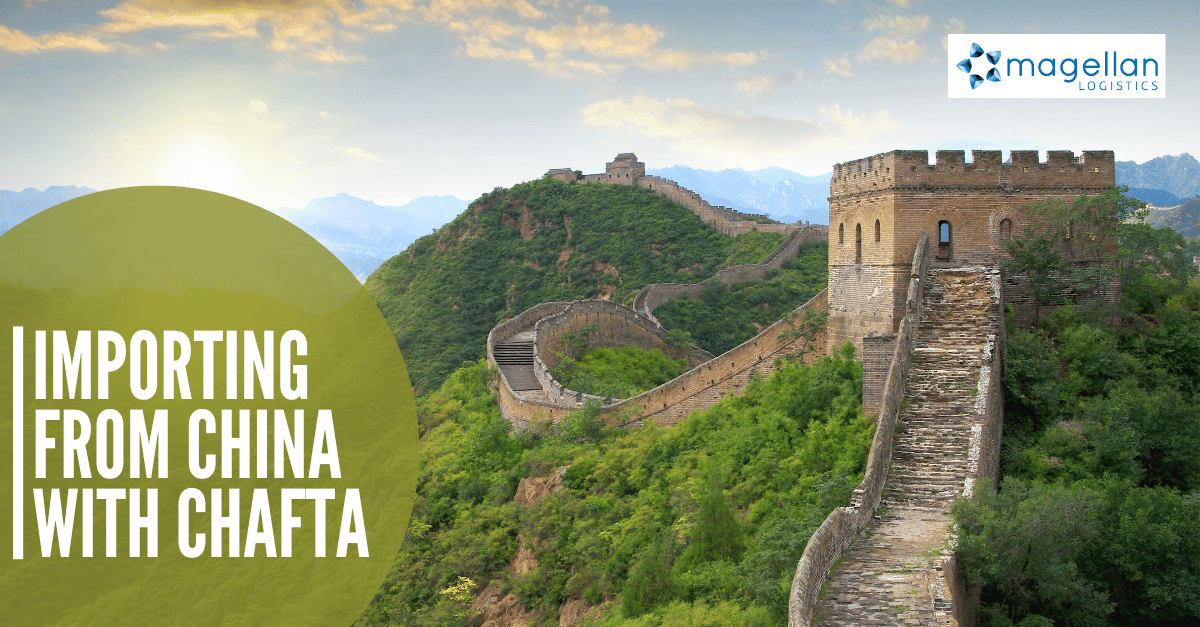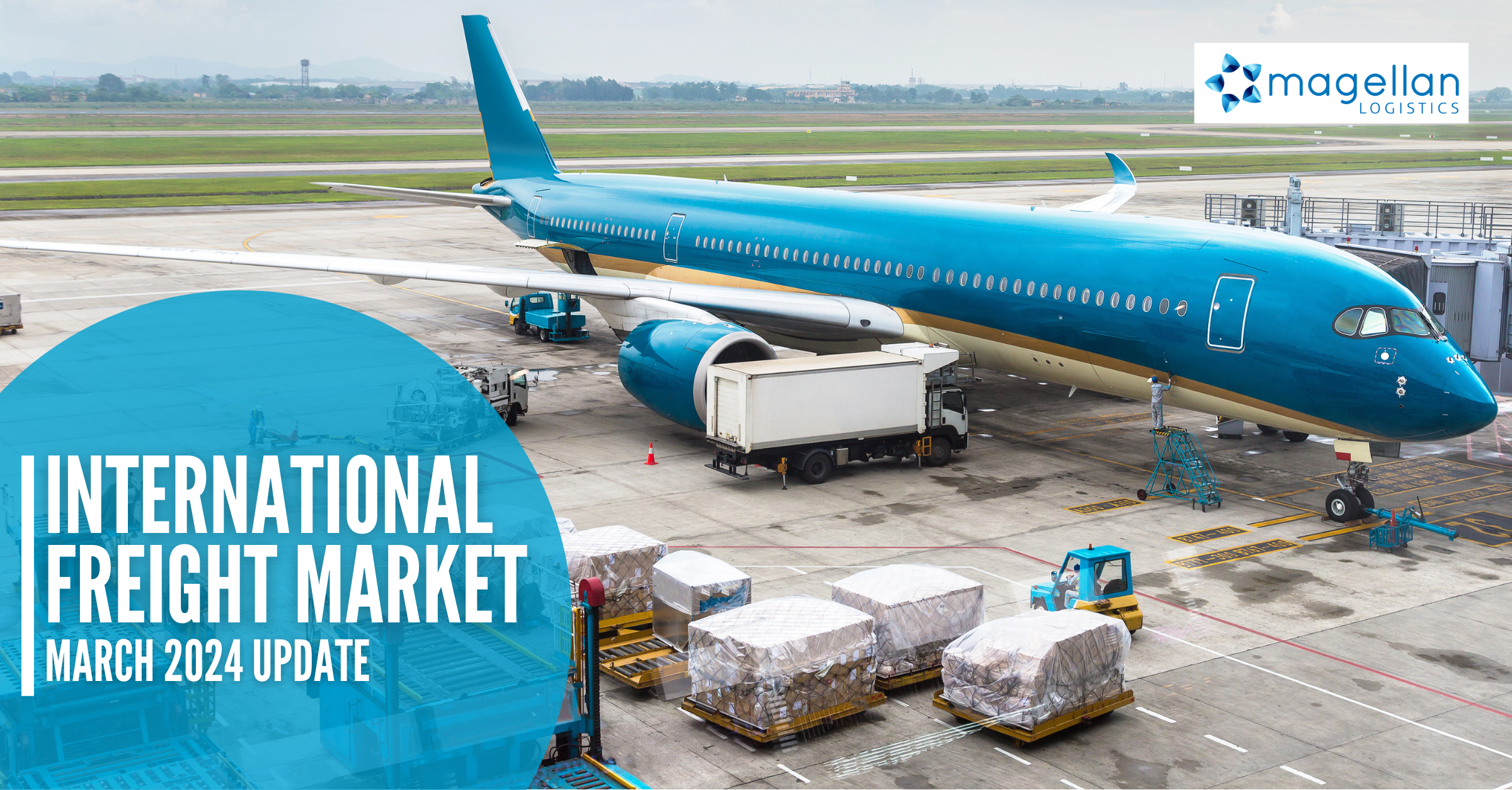Importing from China to Australia under ChAFTA presents significant opportunities for businesses. However, navigating the intricacies of customs regulations, tariff treatment, and rules of origin can be complex. Understanding the process and requirements under the China-Australia Free Trade Agreement (ChAFTA) is crucial for importers to ensure a seamless and cost-effective importation process.
What is ChAFTA?
The China-Australia Free Trade Agreement (ChAFTA) is a bilateral agreement between China and Australia that promotes trade and economic cooperation between the two countries. ChAFTA establishes rules and procedures for trade between China and Australia, creating opportunities for importers and exporters to expand their business activities and strengthen economic ties between the two nations. It aims to reduce barriers to trade by eliminating or reducing tariffs on goods, enhancing market access, and providing preferential treatment for certain products. This comprehensive guide will delve into the step-by-step process of importing from China to Australia, providing detailed insights to optimise your import activities and maximise the benefits of ChAFTA.
Step 1: Identify the tariff classification of your goods
Tariffs, also known as customs duties, are taxes imposed on goods when they are imported or exported. Governments levy them to generate revenue, protect domestic industries, or regulate trade. Identifying the correct tariff classification of your goods is the first step in determining the applicable tariff treatment under ChAFTA. The Harmonized System (HS) code, an internationally recognised system, categorises goods based on their characteristics and use. It is crucial to accurately identify the HS code for your product to determine its tariff treatment under ChAFTA.
Step 2: Determining how goods are treated when importing from China with ChAFTA
Once you have identified the tariff code for your goods, understanding how they will be treated under ChAFTA becomes essential. Australia and China have established tariff schedules outlining the duty rates and staging categories for different goods. These staging categories indicate the gradual elimination of tariffs over a specific period. By referring to the tariff schedules, exporters and importers can determine the preferential duty rates applicable to their goods based on the particular year of ChAFTA’s operation. Considering these schedules and determining how they impact the cost of your imports or exports is crucial.
For exporters:
Exporters sending goods from Australia to China can benefit from reduced or eliminated tariffs under ChAFTA, making their products more competitive in the Chinese market. China’s tariff schedule provides detailed information on different goods’ duty rates and staging categories. By understanding and leveraging these schedules, exporters can assess the potential cost savings and competitive advantages of exporting to China.
For importers:
In Australia, those importing from China can access Chinese goods at lower or zero tariff rates under ChAFTA, enabling them to offer competitive prices and expand their product range. Australia’s tariff schedule outlines the duty rates and staging categories for different goods. Importers should carefully review this schedule to identify the applicable duty rates and the gradual elimination of tariffs over time. This knowledge will help importers plan their sourcing strategies and maximise the cost savings ChAFTA provides.
Step 3: Determine whether your goods meet the rules of origin requirements
Rules of origin are crucial criteria determining whether goods are eligible for preferential tariff treatment under ChAFTA. Only goods that meet the rules of origin defined in ChAFTA can benefit from reduced or zero tariffs. Let’s explore the key topics related to rules of origin under ChAFTA:
#1 Wholly obtained (WO) Goods:
These goods are entirely produced or obtained in Australia or China without incorporating any materials or inputs from outside these countries. Examples include minerals extracted in Australia or agricultural products grown in China.
#2 Wholly produced (WP) Goods:
These goods are produced entirely in Australia or China, using materials or inputs that may have originated from other countries. However, these inputs must undergo substantial transformation or processing in the country of production. An example would be textiles manufactured in China using Australian cotton.
#3 Product-specific rules (PSRs):
Product-specific rules (PSRs) come into play when goods contain inputs from outside Australia or China. These rules define the criteria for determining the origin of a product based on its specific characteristics or components. PSRs can include different requirements, such as changes in tariff classification, regional value content, or a combination of both.
– Change in Tariff Classification: This rule requires that the final product be classified under a different tariff code than its non-originating inputs. It ensures that the production process adds sufficient value or transforms the goods.
– Regional Value Content: Regional value content determines the minimum percentage of value that must be added to a product in Australia or China. It considers the value of both originating and non-originating materials used in the production process.
#4 Other approaches:
ChAFTA also allows for alternative methods to determine the origin, including using specific manufacturing or processing operations, as long as they meet the requirements defined in the agreement.
#5 How to find the PSR applicable to your product:
The ChAFTA rules of origin guide provides detailed information on PSRs for various products. It outlines the specific criteria, processes, and calculations required to determine whether a product meets the origin requirements. By consulting this guide, exporters can identify the relevant PSR applicable to their goods.
#6 Other important rules of origin:
In addition to the primary rules of origin, there are several other considerations to keep in mind when assessing the origin of goods under ChAFTA:
– De Minimis: ChAFTA allows for a tolerance level that permits a small percentage of non-originating materials in the final product while still considering it as originating.
– Cumulation: ChAFTA allows for cumulation, which means that materials originating from Australia or China can be treated as originating in the importing country when used to produce goods.
– Fungible Materials: When identical materials from different origins are mixed together and cannot be separately identified, ChAFTA provides rules to determine the origin of the mixed materials.
– Minimal Operations or Processes: Some processing operations or minor alterations may not be sufficient to confer origin to the final product. ChAFTA specifies the minimum requirements for operations to be considered substantial.
– Neutral Elements: Certain components or elements that do not contribute to the origin of the final product can be disregarded when determining origin.
– Accessories, Spare Parts, and Tools: ChAFTA provides specific provisions for these types of goods, allowing them to be treated as originating under certain conditions.
– Packing, Packages, and Containers: Generally, packaging materials are not considered when determining origin. However, specific rules exist for certain types of goods or circumstances.
– Transit through a Third Party: ChAFTA allows goods to transit through a third country without losing their origin status, as long as specific conditions are met. The most important condition is that the goods must remain in a Customs controlled area and not enter home consumption in that third country.
Step 4: Certify the origin of your goods under ChAFTA
For imports to Australia:
#1 Determine the origin:
Importers must assess whether the goods meet the origin criteria defined in ChAFTA. This involves identifying whether the goods are wholly obtained or wholly produced in Australia or China or if they meet the product-specific rules outlined in the agreement.
#2 Claiming preferential tariff treatment:
If the goods meet the rules of origin, importers can claim preferential tariff treatment when importing them into Australia. This allows for reduced or zero tariffs, providing a competitive advantage in the market.
#3 Documentation:
Importers should maintain appropriate documentation to support the origin claim. This may include a certificate of origin issued by an authorised body or a pre-approved Declaration of Origin issued by the Australian Border Force. Authorised bodies in China are :
- The General Administration of Customs of China
- The China Council for the Promotion of International Trade
For exports to China:
Exporters sending goods from Australia to China under ChAFTA need to adhere to the following rules of origin requirements:
#1 Determine the origin:
Exporters must determine whether the goods meet the origin criteria specified in ChAFTA. This involves assessing whether the goods are wholly obtained or wholly produced in Australia or China or if they satisfy the applicable product-specific rules.
#2 Certification of origin (COO):
Exporters need to obtain a certificate of origin, which serves as proof that the goods meet the origin requirements. This certificate is typically issued by an authorised body, such as the Australian Chamber of Commerce and Industry (ACCI), the Australian Industry Group (AIG), or Wine Australia (for wine and wine-related products). Exporters should contact one of these organisations to obtain a certificate of origin application form.
#3 Verification:
Chinese customs authorities may conduct verification procedures to ensure compliance with the rules of origin. Exporters should be prepared to provide supporting documentation and cooperate with any requests for verification.
Record keeping:
Both exporters and importers should maintain records related to the origin of goods. These records include copies of certificates of origin, declarations of origin, supporting documents, and other relevant information. It is essential to keep these records for a specified period as required by the respective customs authorities.
Waiver of certification:
In certain circumstances, such as low-value shipments or where the certification process is impractical, the requirement for a certificate of origin or declaration of origin may be waived. Importers and exporters should check with the customs authorities of the importing country to determine if a waiver is applicable and under what conditions.
Retrospective claims:
In some cases, importers may seek preferential tariff rates retrospectively after the goods have been imported. This could be due to a missing or delayed certificate of origin or declaration of origin. Importers should consult with the customs authorities and follow their procedures for making retrospective refund claims. Under ChAFTA, COOs must be issued within twelve months of departure from origin; however, once issued, a refund claim may be lodged within four years.
Importing from China to Australia under the China-Australia Free Trade Agreement (ChAFTA) provides numerous business advantages. By understanding the tariff classification of goods, the treatment of goods under ChAFTA, and the rules of origin requirements, importers can optimise their import activities, reduce costs, and take advantage of preferential tariff rates. Certification of origin through certificates of origin or declarations of origin is essential to claim preferential tariff treatment. Importers and exporters should maintain proper documentation, adhere to record-keeping requirements, and comply with verification procedures. By following these guidelines and seeking guidance from relevant authorities or trade experts, businesses can navigate the import process successfully and foster trade between China and Australia.
Magellan’s team of customs brokers is specially trained and licensed to handle all customs and quarantine requirements and routinely deal with importers, exporters, port authorities, and governments.
Magellan is Australian Trusted Trader accredited, recognising our secure supply chain and compliant trade practices. Our ATT status provides a range of trade facilitation benefits, helping us quickly address the complexities of the border clearance process.
With over 25 year’s experience in handling cross-border trade, and a wealth of experience importing from China under ChAFTA, we are your ideal partner for moving your cargo from China to Australia.
In addition to customs brokerage, Magellan provides freight and logistics services to all industries, including sea freight, air freight, and the all-important digital freight portal, providing 24/7 visibility of all your shipments. Get in touch with one of our freight specialists on 1300 651 888.














